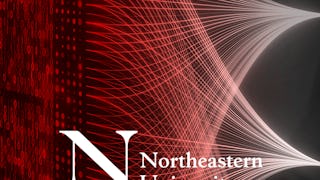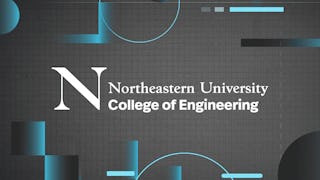This course will offer you an opportunity to learn the fundamental concepts and emerging technologies in database design and modeling and database systems. It presents a balanced theory-practice focus and covers entity relationship model and UML model, relational model, and relational databases. By the end of this part 1 course on data analytics, you will have a foundational understanding of the theory and applications of database management to support data analytics, data mining, machine learning, and artificial intelligence.
通过 Coursera Plus 解锁访问 10,000 多门课程。开始 7 天免费试用。


您将获得的技能
要了解的详细信息

添加到您的领英档案
July 2025
29 项作业
了解顶级公司的员工如何掌握热门技能

该课程共有7个模块
In this module, we will introduce the fundamental concepts of database management, review applications of database technology, and define key concepts. We will also contrast the file-based approach to data management with the database approach. Finally, we will examine the elements of a database system and the advantages of database design.
涵盖的内容
3个视频7篇阅读材料4个作业
In this module, we take a quick look at what is under the hood of a database management system. We will examine the key components of DBMS architecture and how these components work together for data storage, processing, and management. We also check how DBMSs can be categorized based on data models, degree of simultaneous access, architecture, and usage.
涵盖的内容
3篇阅读材料3个作业
In this module, we first review the database design process from conceptual and logical to physical database design and elaborate on the data requirements of a business process. We then introduce the Entity Relationship (ER) model for conceptual data modeling. The fundamental building blocks of the ER model include entity types, attribute types, and relationship types. We discuss attribute type details such as domains, key attribute types, simple versus composite attribute types, single-valued versus multi-valued attribute types, and derived attribute types. For relationship types, we also examine the degree and roles, cardinalities, weak entity types, and ternary relationship types. Various examples are included for clarification.
涵盖的内容
1个视频5篇阅读材料4个作业
In this module, we will learn three additional semantic data modeling concepts: specialization/generalization, categorization, and aggregation. These concepts enhance and extend the ER model discussed in the previous module. We will introduce an alternative conceptual model: the Unified Modeling Language (UML) class diagram. The UML is a modeling language that assists in the specification, visualization, construction, and documentation of artifacts of a software system. The UML can offer case diagrams, sequence diagrams, package diagrams, deployment diagrams, etc. Here we use the UML for conceptual data modeling.
涵盖的内容
1个视频3篇阅读材料3个作业
In this module, we focus on some organizational aspects of data management, including the DBMS catalog, the roles of metadata, and metadata modeling. We also discuss data quality, data governance, and different roles in data management. By the end of this module, you will understand the proper management of data and the corresponding data definitions. Data management entails proper management of data and the corresponding data definitions or metadata. The objective of data management is to ensure that (meta-)data is of good quality, and thus a key resource, for data analytics tasks and effective and efficient managerial decision-making.
涵盖的内容
5篇阅读材料5个作业
As discussed in the previous modules, designing a database takes multiple steps. Once the conceptual data model is finalized, the next step is to map the conceptual data model to a logical data model by the database designer during the logical design step. Note that, unlike the conceptual data model, the logical data model is associated with the data model used by the implementation DBMS environment. In other words, a logical data model is intended for a specific type of DBMS. Since the top ten DBMSs in use are usually dominated by relational DBMSs such as Oracle, MySQL (open-source), Microsoft SQL Server, etc., we will focus on the relational model that can be used as a logical data model for relational DBMSs. The relational model is a formal data model with a sound mathematical foundation, based on set theory and first-order predicate logic. Unlike the ER and EER models, the relational model has no standard graphical representation, which makes it unsuitable as a conceptual data model. Given its solid theoretical underpinning, the relational model is commonly adopted to build both logical and internal data models. In this module, we are concerned with the definitions of relational models that can be used as a logical data model and/or an internal model for relational DBMSs such as Oracle and Microsoft SQL servers. The relational model is introduced as a formal data model. Different types of keys are defined, and their roles are specified along with relational constraints. Students will learn the relational model as a logical data model. The mapping of a conceptual ER model to a relational model is explained in detail, including the mapping of entity types, binary one-to-one relationship types, binary one-to-many relationship types, binary many-to-many relationship types, unary relationship types, n-nary relations types, multi-valued attribute types, and weak entity types.
涵盖的内容
2个视频7篇阅读材料5个作业
This module first presents an overview of the insertion, deletion, and update anomalies in an unnormalized relational model and discusses informal normalization guidelines. Two key concepts used in the normal forms are defined and examined: functional dependency and prime attribute type along with various special cases of function dependency, including full versus partial, transitive, trivial, and multivalued dependencies. The process and the formal procedures for the normalization of a relational model are discussed in detail via the first normal form (1 NF), the second normal form (2 NF), the third normal form (3 NF), the Boyce-Codd normal form (BCNF), and the fourth normal form (4 NF).
涵盖的内容
1个视频6篇阅读材料5个作业
攻读学位
课程 是 Northeastern University 提供的以下学位课程的一部分。如果您被录取并注册,您已完成的课程可计入您的学位学习,您的学习进度也可随之转移。
位教师

从 Software Development 浏览更多内容
 状态:预览
状态:预览Northeastern University
 状态:预览
状态:预览Northeastern University
 状态:预览
状态:预览Northeastern University
 状态:免费试用
状态:免费试用
人们为什么选择 Coursera 来帮助自己实现职业发展




常见问题
To access the course materials, assignments and to earn a Certificate, you will need to purchase the Certificate experience when you enroll in a course. You can try a Free Trial instead, or apply for Financial Aid. The course may offer 'Full Course, No Certificate' instead. This option lets you see all course materials, submit required assessments, and get a final grade. This also means that you will not be able to purchase a Certificate experience.
When you purchase a Certificate you get access to all course materials, including graded assignments. Upon completing the course, your electronic Certificate will be added to your Accomplishments page - from there, you can print your Certificate or add it to your LinkedIn profile.
Yes. In select learning programs, you can apply for financial aid or a scholarship if you can’t afford the enrollment fee. If fin aid or scholarship is available for your learning program selection, you’ll find a link to apply on the description page.
更多问题
提供助学金,



